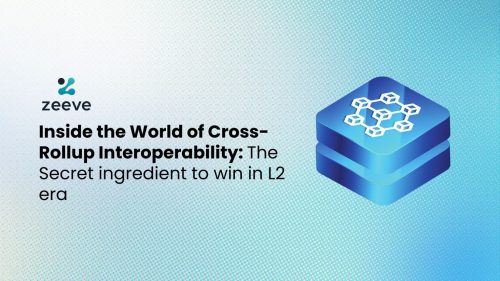
Inside the World of Cross-Rollup Interoperability: Secret ingredient to win in L2 era
How big is the blockchain? It is worth $2T at the time of writing. But almost all the L1s are suffering from an innate problem of scalability. As a result, they have been highly dependent on L2s for achieving speed and throughput. Nonetheless, the intriguing fact is though L2s have undoubtedly helped max out at speed and throughput they choke when it comes to cross-rollup interoperability. With that said, if you wish to win in the L2 era, you cannot redeem your ecosystem to end up as separate islands of their own.
Rather, the need of the hour is securing scalability & roll-up Interoperability hand-in-hand without compromising the security. In this article, we shall see how L2s have provided diluted cross -rollup interoperability instead of concentrated interoperability, which is the need of the hour. Moreover, we shall also see how some of the solutions are working towards providing concentrated interoperability without any security compromises exposed by bridges.
Problems in Rollup Interoperability
There are a few reasons to categorize roll-up interoperability in the rollups as diluted instead of concentrated because when it comes to interconnecting different rollup ecosystems, the way forward is through bridges. However, bridges have failed to deliver on three grounds;

- Creating the same level of trust as the main-chain during roll-up interoperability
- It is not extensible across multiple chains
- It is not data-agnostic
As a result, L2s are establishing a trust-dependent model to connect to its neighboring ecosystem ideally. However, the trusted setup creates the problem of man-in-the-middle (M-i-M) to verify the transaction. The M-i-M can tweak the codes because the bridges do not inherit the security of the base layer and siphon the funds through multi-sig attacks. We have already seen the same on the Polygon, Ronin, and Wormhole bridges that had cost the ecosystem way over $2 B, which is considerably huge, acknowledging that the technology is very new and experiencing early entry-level penetration.
Thus, what’s needed is to ensure that cross-rollup interoperability & usability must occur simultaneously in an absolute manner, which means it should ideally have security in place as well. That can only happen when different rollups, irrespective of the environment technology stack that they use to build, must be able to communicate in a trust-minimized way and overcome the interoperability trilemma.
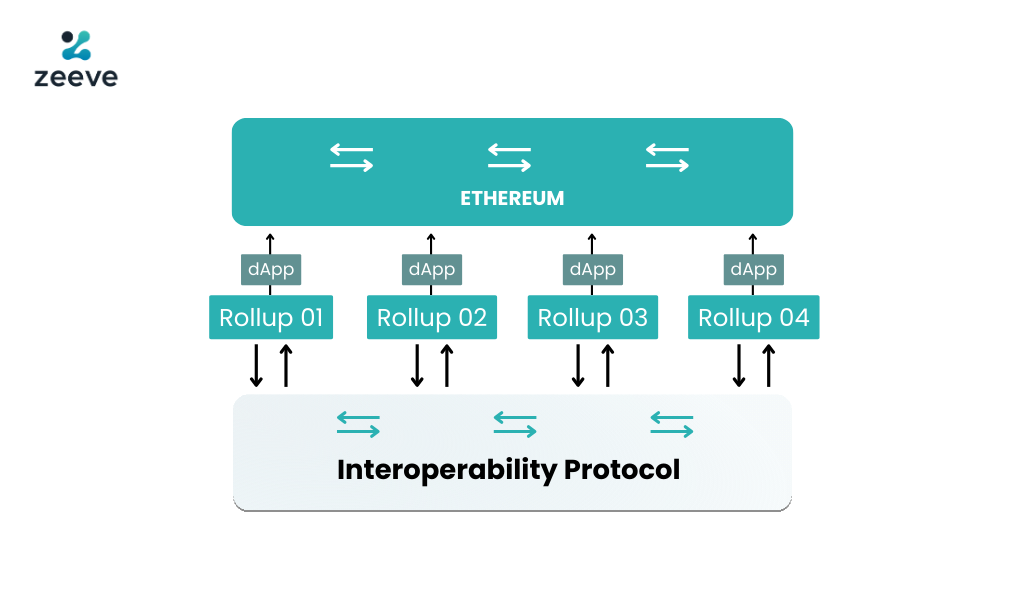
And that can only happen when solutions are built that guarantee immutable, permissionless, and censorship-resistant connection with the roll-up networks. Let’s look at how some of the protocols are achieving the same in their own unique ways.
Top Protocols & How They Solve the Interoperability Problems in Rollups
LayerZero
LayerZero uses the DVN or Decentralized Verifier Network that acts as a Quasi Aggregator. The trade-off of Layer Zero is that it solves the problem of verifying messages across chains in a quasi-linear manner because the developers can easily send arbitrary data, external call functions, and tokens while preserving full control over their application while streamlining roll-up interoperability. As a result, sovereignty is restored for developers while maintaining omni-channel communication with the roll-up network. You can sum up LayerZero as the TCP/IP of the blockchains that allows seamless communication with the other rollup networks in a truly permissionless, decentralized, censorship-resistant, and immutable manner. Layer Zero achieves the same through an Omnichain Fungible Token (OFT) Standard, allowing developers to extract token balances across multiple supported blockchain ledgers.
The OFT Standards provide an extra layer on top of the protocol consensus layer that tracks all the movements of the assets across all the partner networks. As a result, the users are given the advantage where they have the discretion of debiting one token from a separate chain and crediting the same on a different chain through a messaging protocol layer that provides ZK-proofs of the events without the source and the destination chain requiring token locks on vulnerable bridges.
HyperLane
HyperLane, like its counterpart LayerZero, is using a different type of interchain communication known as the interchain security model that sits atop the consensus, execution, settlement, and DA layer to give complete control to the developers to compose, customize, and configure their security model as per their project needs to communicate with different rollup environments. The Interchain helps developers build interchain apps that collate multiple blockchains and bundle them together through the Interchain highway that sits atop the modular stack.
The interchain highway packs the data and sends the same to the mailbox that relays the data to the destination chain to trigger an execution for a state change in the following manner.
The mailbox acts like a chain aggregator. Its core role is to track all the events across multiple blockchains in a trustless manner. Generally, the events are relayed in the form of bytes & codes to evaluate verification. Once that has been done, the underlying security module uses validators, optimistic systems, watchtowers, and ZKs to verify the transaction.
It is followed by the relayers acting as decentralized networks passing data across diverse chains to trigger a state execution on the source and the destination network in a truly peer-to-peer, secure, and decentralized manner. Since hyperlanes use modularity, it allows developers to use their own security models instead of proceeding with a cookie-cutter approach to safeguard cross-rollup interchain communication.
Axeler
The Axeler protocol is using Cross-Chain Gateway Protocol (CGP) and Cross-Chain Transfer Protocol (CTP) to streamline cross-chain rollup interoperability communication using smart contracts. Any chain can connect through the CTP protocol that queries through API calls analogue for getting the HTTP GET/POST requests. Since the Axelar protocol eliminates the need for integration at the protocol level and developers can just plug and connect through an API protocol and connect with the global liquidity spread across chains, it allows seamless cross-bridging of different rollups without complexities.
Axelar protocol eliminates the hassles that other blockchains like Cosmos have left where you need centralized systems, interoperability hubs, and pairwise bridges to connect with different blockchains. In addition to this, it is a must that the blockchains are developed on Tendermint. With the help of Axelar protocol, the same can be done without having to depend on a single programming language to communicate with different blockchains. Axeler’s Interchain Amplifier and Maestro allow a one-click set-up with the Axelar protocol and connect your dapp built across different cross-chain rollups to interoperate and communicate with your partner network using a single connecting API. The trade-off of Axeler is that it allows one-bridging to connect with numerous chains at one go, which is a bonus in comparison to other interoperability protocols.
Router Protocol
The Router Protocol has introduced the concepts of intent to help bridge different chains in an easy-to-use way. Using the Cross-Chain Intent Framework, the Router protocol seamlessly simplifies cross-rollup interchain communication because the users can also express the intent, and the smart contracts can trigger a state execution by pre-empting the intent. To put that into perspective, Router uses a prompter to understand the intent of the user, and thereafter, it performs the execution on their behalf.
For example, if a user wants to swap 1000 DAI for ETH at the best rates, the Router Protocol will hunt through various protocols, match the order, and trigger the execution on behalf of the user to provide them with near Web 2 kind of transaction experience. Right now, users are looking for simplicity while using Web 3. Router has simplified the same where users can just provide the prompts and they can get things done at lightning speed. That’s how Router is not just simplifying cross-rollup interoperability but also taking the UX to the next level, mirroring the simplicity of Web 2.
How Can Zeeve Help you bring Interoperability to your rollups?
Zeeve is the leading platform for Rollups-as-a-service (RaaS) solutions, with a range of integration partners in its network of trusted 3rd parties. Cross- rollup Interoperability solutions are one of them. All the interoperability protocols mentioned above are available as an easily pluggable component for optimistic or ZK rollups deployed with Zeeve RaaS. Based on the type of interoperability solutions required, rollup developers can choose which of the above protocols most fit their needs. Be it zkSync ZK stack, Polygon CDK, Arbitrum Orbit, or OP Stack, all of these interoperability protocols can work seamlessly with any of the rollup frameworks available on Zeeve.
Apart from the interoperability tools, decentralized sequencers, DA layers, oracles, privacy and security tools, and account Abstraction SDKs are also available as pluggable components.
If you are planning to launch your own rollups, don’t hesitate to reach out to us. Our experts can help you identify the best infrastructure suitable for your use case. Schedule a call today!


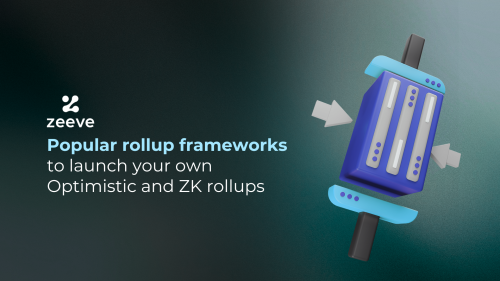

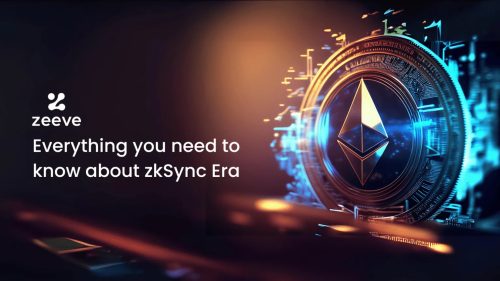
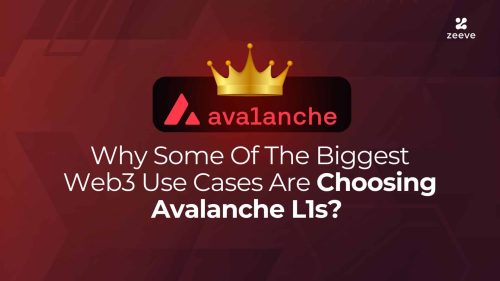
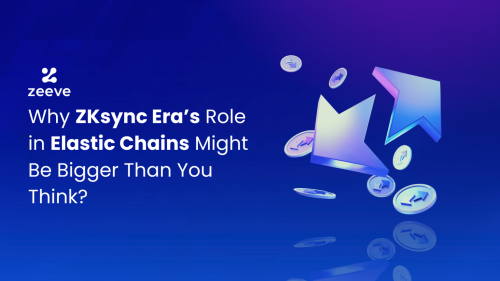
Responses